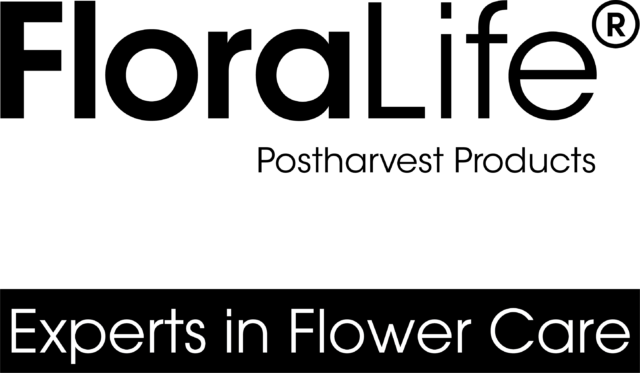How to avoid leaf yellowing in Alstroemeria and other bulb crops?
Research Update April 2022, powered by FloraLife
Sanal Krishnan, Ph.D. – Research Scientist – FloraLife

Background
In cut flowers, leaf yellowing is commonly associated with senescence or premature end of life due to chlorophyll breakdown. The economic value of many popular cut flowers is associated with healthy green foliage. Flowers with yellow leaves can significantly reduce market value. Various environmental and physiological factors contribute to leaf yellowing such as light, temperature, carbohydrate status, ethylene exposure and hormonal balance. Cut flowers, especially bulb crops like Alstroemeria, Lilies, Tulips and Iris are susceptible to leaf yellowing. Some of the modern cultivars of Alstroemeria have long flower life but their display life is cut short by rapid leaf yellowing under commercial condition.
Our research indicates that the use of FloraLife® Bulb 100*, a post-harvest treatment, can avoid leaf yellowing in bulb crops such as Alstroemeria, Tulips, Lilies, Iris and more. In addition to preventing foliage yellowing, the product can positively influence flower development and improve flower color and size. The study tested the effect of FloraLife® Bulb 100 on leaf yellowing in three Alstroemeria varieties.
Methods
Treatments
1. Water
2. FloraLife® Bulb 100 (0.15 ml/L)
Crop: Alstroemeria Varieties
1. Lemon (Yellow)
2. Virginia (White)
3. Nadya (Red)
Method: Flowers were obtained from the grower freshly harvested and without any postharvest treatment. Buckets were filled with 3 liters of use solution (FloraLife® Bulb 100 or water). All stems were then recut to a length of about 65 cm and foliage that would fall under solution level was stripped off. Each bucket contained 15 stems per variety mixed in each bucket. To stimulate the retail phase, the buckets were then stored for 2 days at 5°C, followed by 3 days at 20°C. The flowers in each bucket were then divided over three vases (replicates). Stems were cut again and any foliage that would be under solution level stripped off. Each vase had 1 liter of water and 4 stems of each variety (so 12 stems in total). The test used FloraLife® Bulb 100 in holding solution and water in vase solution to simulate the retail phase and consumer phase respectively.
Results
On day 7, the tested varieties showed 6.2%, 0% and 37.5% leaf yellowing in control treatment, while no leaf yellowing symptoms observed with the FloraLife® Bulb 100 treatments. On day 14, control treatment showed 13.9%, 2.8%, and 50.3% leaf yellowing, while the FloraLife® Bulb 100 treated flowers showed 3.1%, 0%, and 0% for all 3 Alstroemeria varieties.


Conclusion
- Among the 3 Alstroemeria varieties tested, ‘Virginia’ showed the highest leaf yellowing of 50.3% in control while the FloraLife® Bulb 100 treated flowers showed 0% yellowing.
- FloraLife® Bulb 100 treatments were able to prevent leaf yellowing in the 3 varieties tested in this study.
- The results showed that FloraLife® Bulb 100 treatments can avoid leaf yellowing effectively in Alstroemeria.


*Product availability depends upon geographical region. Check here for more information.
